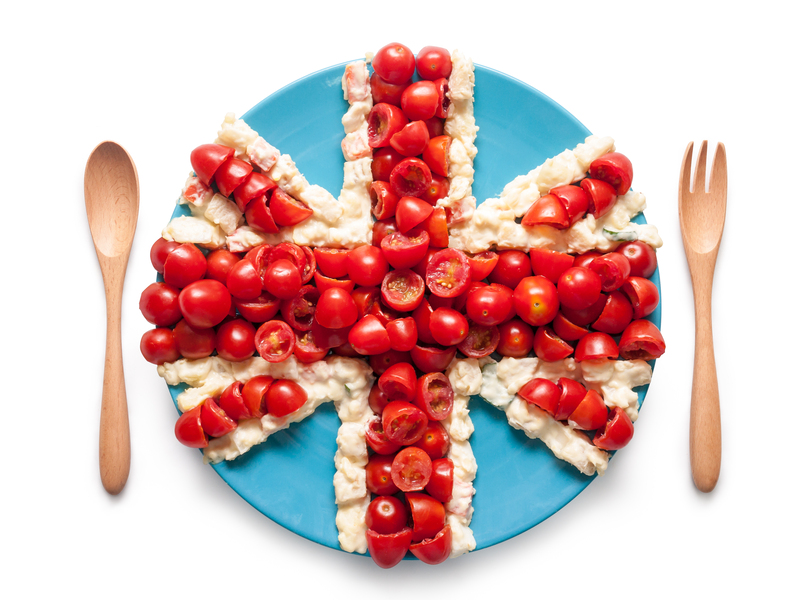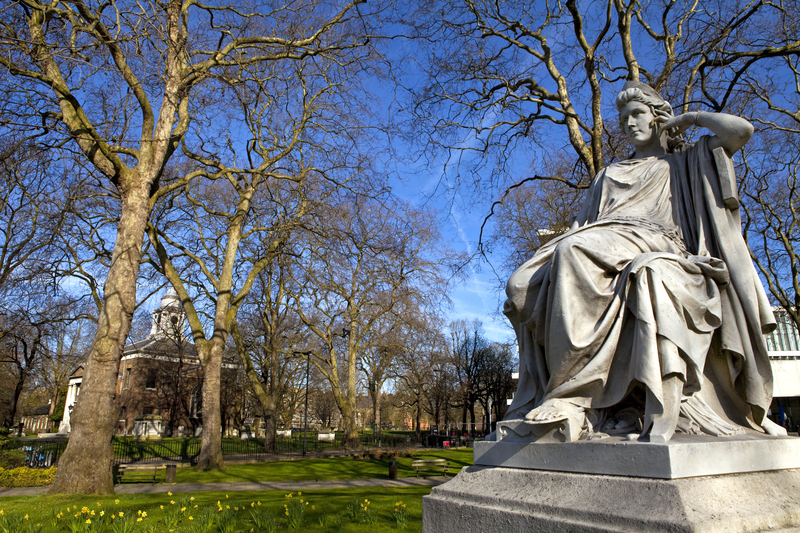Celebrating Gardening with Your Canine Friends
Posted on 31/05/2025
Celebrating Gardening with Your Canine Friends: A Bond That Blooms Outdoors
Gardening and dog ownership are two joys that enrich our lives in countless ways. When you combine gardening with your dog, you create opportunities for bonding, learning, and healthy outdoor activity. Whether you're a seasoned horticulturist or simply love the sight of puppies frolicking amidst vibrant plants, exploring canine-friendly gardens opens up a world of fun and discovery for both you and your furry companion.
Why Celebrate Gardening with Dogs?
The companionship of dogs and the tranquility of a garden are a match made in heaven. Canine-friendly gardening offers physical exercise, mental stimulation, and emotional satisfaction for both species. Here's why sharing your garden with your dog is a reason to celebrate:
- Physical Well-being: Gardening and playing with your dog keeps both of you active and healthy.
- Mental Health Boost: Time spent in green spaces with pets reduces stress and elevates mood.
- Bonds that Grow: Joint gardening projects foster trust and strong relationships.
- Natural Curiosity: Dogs love to explore. Gardens offer countless sights, sounds, and smells to engage their senses.
- Learning Opportunities: Training your dog to respect your plants teaches patience, discipline, and obedience.
Designing a Dog-Friendly Garden Oasis
Creating a garden that you and your dog can enjoy together involves thoughtful planning and plant selection. Here are key steps to transform your outdoor space into a canine haven:
1. Choose Pet-Safe Plants for Peace of Mind
Many popular garden plants are toxic to dogs. To ensure a safe garden for your canine friend, opt for non-toxic options such as:
- Sunflowers
- Marigolds
- Snapdragons
- Rosemary
- Basil
- Creeping thyme
Always double-check the toxicity of any plant before adding it to your dog-friendly backyard.
2. Create Pathways and Play Zones for Active Pups
Dogs love to patrol, play, and dig. Designate specific areas for digging and chasing to keep both your plants and your pup happy. Consider:
- A sandpit for digging (bury toys to encourage exploration!)
- Sturdy, non-toxic ground cover along canine walkways
- Open lawn spaces for games of fetch and frisbee
- Shady nooks with water bowls for resting between adventures
3. Employ Hardy, Low-Maintenance Plants
Some dogs can be rough on your garden beds. Invest in plants that are:
- Resistant to trampling (such as ornamental grasses or hostas)
- Easy to replace (annuals are a good choice for ever-changing displays)
- Fast-growing, so blank spots are quickly refilled
4. Choose Dog-Safe Mulch and Fencing
Some mulches, like cocoa mulch, are toxic to dogs. Instead, use cedar, pine, or untreated wood chips for mulching. To protect delicate plants, consider:
- Low decorative fencing to keep playful pups at bay
- Borders made of stone or brick for extra durability
- Raised beds, which are harder for dogs to access
Training Tips for Gardening with Dogs
One of the keys to a thriving relationship between your garden and your dog is proper training. Here are essential strategies to help your canine friend become an ideal gardening companion:
- Positive Reinforcement: Reward your dog with treats and praise when they stay on paths and out of garden beds.
- Consistent Boundaries: Use clear commands and physical borders to teach where dogs are allowed to play.
- Redirect Digging: If your pup loves to dig, create a specific "dig zone" and gently discourage digging elsewhere.
- Supervised Adventures: Spend time together outdoors and observe your dog's behavior to correct unwanted habits quickly.
Gardening Activities to Do with Your Dog
Gardening isn't just about plants. With a creative approach, your backyard can become a canine enrichment zone. Here are great activities that both gardeners and their four-legged friends can enjoy together:
Plant a Dog Herb Garden
Many herbs are safe and beneficial for dogs. Try planting:
- Parsley (for fresh doggy breath)
- Rosemary and thyme (rich in antioxidants)
- Basil (adds flavor to homemade dog treats!)
DIY Dog Toys Using Garden Finds
-
Braid tug toys from leftover plant stalks (make sure they're non-toxic)
Fetch sticks: Use branches from dog-safe trees for fetch
Enrichment Walks
Take your dog on a "scent walk" around your garden, encouraging sniffing and exploration. This natural stimulation reduces boredom and strengthens your dog's mind.
Harvest Together
- Grow dog-friendly fruits and veggies, like carrots, green beans, or blueberries.
- Let your dog "help" collect produce under supervision--many dogs love to pick ripe fruit!
Celebrating Special Occasions: Dog-and-Garden-Themed Events
Your garden is the perfect venue for celebrating milestones with your pooch. Whether it's a birthday, "gotcha day," or just the joy of spring blooms, here are festive ideas that combine gardening and canine fun:
- Puppy Picnics: Pack a picnic basket, invite friends (human and canine), and enjoy a meal surrounded by flowers.
- Flower Crowns and Bandanas: Use garden blooms to create adorable accessories for your dog (use only nontoxic plants!)
- Photo Day: Capture your pup among the flowers and foliage for keepsake memories.
- Treat Treasure Hunts: Hide dog treats around the garden for a fun sniff-and-seek game.
Safety First: Protecting Dogs in the Garden
To ensure that celebrating gardening with your canine companions remains safe and enjoyable, consider these vital safety tips:
- Sunscreen: Apply a pet-safe sunscreen to short-haired or light-colored dogs, especially when gardening lasts several hours.
- Hydration Stations: Place water bowls in shady spots throughout the garden to encourage frequent sips.
- Shade and Shelter: Trees, awnings, or doghouses provide critical relief from intense sun or sudden rain.
- Non-Toxic Weed and Pest Control: Avoid chemicals on your lawn and plants. Use natural alternatives like neem oil or diatomaceous earth.
- Supervise At All Times: Never leave your dog alone in the garden, especially if you are unsure about the safety of certain areas or plants.
- Secure Fencing: Maintain sturdy fences to prevent your dog from escaping or encountering neighborhood dangers.
Benefits of Gardening With Dogs: A Wellness Perspective
Integrating your dog gardening activities into your routine delivers a host of health benefits:
- Stress Reduction: Both gardening and canine companionship are shown to reduce anxiety levels.
- Physical Fitness: Digging, planting, throwing balls, and running all promote a healthy lifestyle.
- Sensory Enrichment: Gardens provide varied textures, smells, and sights, which engage both dogs and owners.
- Purposeful Bonding: Joint tasks in the garden foster teamwork and strengthen the human-animal bond.
- Community Connection: Dog-friendly gardens become gathering spaces for neighbors, strengthening social ties.
Dog Lovers' Guide to Favorite Garden Plants
Not sure what to plant in your pet-friendly garden? Here is a handy guide to top choices that are robust, non-toxic, and as beautiful as they are safe:
- Calendula: Easy on the eyes and ideal for attracting pollinators.
- Bee Balm: Gives lovely color, safe for dogs, and supports bees.
- Borage: Its edible flowers are non-toxic for most dogs and lovely in salads, too!
- Sunflowers: Hardy, striking, and non-toxic.
- Creeping thyme: Great ground cover that releases scent when trodden by paws.
*Note: Even with "safe" plants, monitor your dog for allergies or digestive sensitivities.


Gardening with Dogs in Small Spaces
Even apartment dwellers can enjoy gardening with their canine companions. Consider:
- Window boxes with herbs
- Dog-friendly container gardens on balconies (ensure safety rails!)
- Indoor plants like spider plants and Boston ferns, which are safe for pets
- Frequent walks to local parks and community gardens with your dog
Common Gardening Hazards for Dogs and How to Avoid Them
To keep your garden an enjoyable paradise for everyone, avoid these hazards:
- Lilies, azaleas, daffodils, and sago palm: Highly toxic--never allow your dog near these.
- Pesticides and fertilizers: Choose only dog-safe, organic solutions.
- Standing water: Eliminate to prevent mosquito breeding and accidental drinking.
- Sharp garden tools: Store securely out of curious noses' reach.
Conclusion: Cultivating Joy by Gardening with Your Dog
Celebrating gardening with your canine friends is about more than just sharing space; it's about cherishing the little moments outdoors, from digging and sniffing to resting and reaping. By crafting a dog-friendly garden and including your pup in your gardening routines, you unleash mutual benefits: a strengthened bond, a healthier lifestyle, and a backyard that bursts with life and love. So, grab your spade, call your loyal companion, and start cultivating happy memories in your garden today!

